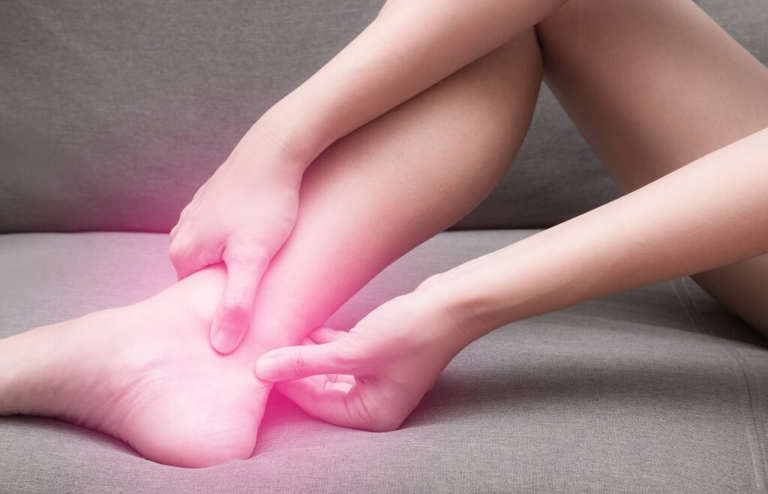Health-conscious people start their day with a workout routine like walking, running, jogging, cycling, etc. It is a great lifestyle but overdoing it can cause leg damage like Achilles tendonitis.
For foot or leg issues people in Orange County can visit Podiatrist Irvine Office. Dr. Sima has more than 20 years of experience in Podiatry. If you are experiencing Achilles Tendonitis then definitely approach her because she is well-trained and better understands the root causes and offers effective remedies to reduce the discomfort.
What causes Achilles Tendonitis?
In general, tendonitis is inflammation in the tendons. Achilles tendonitis is the largest tendon that connects the calf muscle to the heel bone and lower leg.
Several factors cause Achilles Tendonitis –
- Poorly functioning foot – It can cause the heel to shift towards the outside. This harms the tendon sheath, which inflames the area. To stop injury recurrence there is a need to neutralize the abnormality.
- A sudden increase in the use of the legs – Excessive hill running, duration & intensity of training, speed work on uneven surfaces can cause Achilles tendon rupture. Excessive air-filled or heel cushioning shoes can lose their stability over time. The heels can sink in the shoes, which stretches the Achilles tendon when the body and leg move forward and cause tendon damage.
- Tight hamstring muscle and calf – Due to consistent pulling, a strain is exerted on the tendon, which can contribute to Achilles tendon pain.
Symptoms of Achilles Tendonitis
Achilles Tendonitis triggers an array of symptoms including –
- Mild – Periodical pain experienced on the backside of the heel. It is common as soon as you wake up or after physical activity.
- Moderate – Regular pain and swelling appear on the backside of the heel.
- Severe – Constant throbbing pain and if you perform an activity that can put pressure on the Achilles it can cause a rupture or tear.
So, Achilles tendonitis is a condition that can be recognized with a sharp pain in the heel. It makes walking difficult because the tendon is tight. Local swelling is also a telltale sign. If the inflamed Achilles tendon is left untreated then it can tear and this may need surgical intervention.
If you feel you have shooting pain in the heel then have it diagnosed by an experienced Irvine Podiatrist. The professionals make use of advanced technology to identify the foot injury severity and prescribe several custom treatments to repair the heel and put you back on the running track.
Achilles Tendonitis – How is it diagnosed?
The podiatrists have several tools to identify the exact inflammation location and determine how severe the injury is. During the appointment, the podiatrist starts with a normal physical checkup. Your foot will be pressed manually on the painful zones to identify the swelling and sore location. The podiatrist will even evaluate the range of motion, flexibility, and reflexes of the ankle and foot.
They may even take help from technologies like –
- X-rays – Even if X-rays cannot reveal tendon damage, it helps them eliminate other conditions that trigger similar symptoms and narrow down the list.
- Ultrasound – Real images of Achilles tendon are generated with sound waves. Blood flow across the tendon is visualized.
- MRI – if the ultrasound does not show a clear diagnosis, Magnetic Resonance Imaging is recommended for getting a detailed insight into the injury.
Depending on the diagnosis and severity Orange County podiatrist offer several treatment options but rest and relax top the list.
Achilles Tendonitis treatment
Several treatments can help in getting relief from this overuse damage and stop it from progressing as well as encouraging the pain to heal. Here are some treatment methods the podiatrist will recommend.
Stretching
Stretching the Achilles tendon and calf muscles before and after a workout is a must. It helps to maintain flexibility along the lower leg as well as avoid the occurrence of overuse damage.
Calf muscles strengthening
Calf muscles strengthening workouts are also essential. It is necessary because a strengthened Achilles tendon and calf muscle can handle the impact encountered during activities much better.
Start gradually
Start a new workout routine with gentle exercises and less duration. After your body gets acclimatized, you can slowly increase the intensity and duration of the training. The sudden increase can damage your tendons, so go slow!
Wear right shoes
Proper footwear helps to prevent as well as treat Achilles Tendonitis. The chosen footwear needs to offer sufficient cushioning to the heel as well as firm support to the arch.
Use RICE method
The steps involved in the RICE method are –
- Rest – You need to avoid putting as much less pressure as possible on the tendon until the pain reduces. As there is no complete rupture in the tendon, it will recover on its own. Avoiding pressure helps to quicken the healing process.
- Ice – Wrap an ice pack in a towel and place it on the tendon for 20 minutes to reduce the inflammation. Ensure that the skin does not get extremely cold. Frequently change the position of the ice pack, so there is no frostbite occurrence on the skin.
- Compression – A bandage wrapped around the tendon allows for keeping therapeutic pressure and lessening the inflammation. Ensure that the bandage does not hinder blood circulation.
- Elevation – Keep your foot elevated and in alignment with your chest. Blood flows towards the chest and swelling of the tendon declines slowly.
The podiatrist may even recommend pain relief medications to manage the inflammation.


Comments are closed.